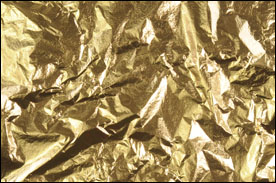We will eventually come though this smothering grasp of the bear when good projects struggle for support and we will move quickly into a bull-run when even the dogs attract hot money. It is the natural cycle of things just as sure as season follows season.
…… and something strange is starting to happen which suggests to me anyway that we are seeing the bottom of this cycle.
We might not be gold prospectors or even aspire to such a pursuit to just head off to the back of beyond and pan for gold. We would all love to make that once in many-life-time gold discovery which could transform the routine and the mundane and that dreary life. We can however do something else. We can get a piece of the action by vicariously placing a bet on a team of intrepid geologists and share with them in the excitement of exploration and maybe the discovery of finding the mother lode. We can become part of the expedition by buying penny shares in a Junior gold explorer. However it is increasingly challenging and rarer still to make an economic gold discovery which is a “ten-bagger” and seldom in a blue moon to make the discovery which leads on to a hundredfold return. So the odds are stacked against success and as a geologist I know the risks are high but the reward can be great.
This is one of the most challenging capital markets for Juniors certainly in my lifetime of almost six decades and indeed also in the memory of one of my associates and who is also a friend and closing in on eight decades of a blessed life as an exploration geologist. There is very little appetite now among investors for the high risk of gold exploration, even with the attraction of making a killing which is hard to match in any other investment sector. In safer jurisdictions and in mature districts geologists have already stumbled across most of the last remaining outcrops of gold mineralisation. Geochemical and geophysical surveys and prospecting around old mines has led to the discovery of new gold veins that lurk near the surface. In the search for “elephant” deposits of gold within the highly prospective and largely unexplored gold-belts of those countries blessed with such mineral endowment there is often corruption, instability and administrative dysfunction to dampen the enthusiasm of investors who may show little interest and be understandably disinclined to add another layer of risk to what is already a very risky business. So deposits are either concealed and deeper within mature mining districts or much closer to surface or breach as outcrop glinting in the sun within the more logistically challenging parts of the world where there is only a dirt road usually impassable during the wet season.
It is little wonder that the discovery cost for gold expressed as a cost-per-ounce is increasing. relentlessly. Operating costs are also increasing and the relatively new “shaming to disclose” of the all-in-sustaining-costs has brought in many cases a stark transparency and realism to the business of mining gold. Capital costs are increasing to drive economies of scale in the mining of lower gold grade deposits and to cover the cost of building new mines in those far flung frontiers where there is virtually little or no infrastructure.
There are hundreds of Junior gold exploreation companies listed on the exchanges of London, Canada and Australia which cannot raise funds to continue to explore and many are now effectively “zombie” companies which have cut budgets to the bone to afford the cost of remaining a public company. There are simply too many Juniors listed with gold projects that should not be listed either because they are too early-stage with no resources or the projects are of dubious quality run by incompetent management and which deserve to recede back into the undergrowth or beneath the shifting sands. There is a strong argument to be made that, apart from Major mining companies, early-stage exploration should be funded privately but then that would take away the thrill of the punt for most investors when the market turns.
How risky is the business of gold exploration? Based on data compiled by Newmont Gold Corporation from a nice round 10,000 gold prospects which were being explored episodically, to a greater or lesser degree, there is a one in 1,000 chance every year of finding an economic gold deposit greater than 100,000 ounces and only one of those will be greater than four million ounces. Some years there are more elephants and some years there are none. Failures naturally do not attract media coverage but rampant optimism based on sizzling grades from the first couple of drill-holes usually becomes viral.
The number of gold deposits and the total amount of gold discovered in any given year peaked in late 1980’s and has been steadily declining ever since. In the late 1980’s discoveries generated over 200 million ounces per year of new gold resources, whereas more recently in 2010 it is estimated that discoveries will account for less than 80 million ounces of new gold resources which equates more or less to what is now being mined annually1. Also remember that resources are not reserves and so are a long way from production. Resources are defined as what is economically and technically viable to mine at some reasonable time in the future. In other words you expect to make good money to pay back the banks and reward your investors based on an assumed gold price which is usually significantly higher than the current gold price. Empirically only 60 to 80 percent of reported resources will eventually convert to reserves and in some cases all of a project resource will fail to convert to an economic deposit because even the sweet spot does not have critical mass or you can’t extract the gold at a reasonable cost or maybe your actions have caused outrage and mistrust in the local community. Despite the name not all reserves will be economically viable to mine at lower gold prices and higher operating costs.
Gold miners are losing reserves by mining them at the rate of some 75 million ounces annually and as we have seen recently lower gold prices have shunted a significant amount of reserves into resources. There should be little doubt that a view commonly now held is indeed the case, that rising gold prices during the running of the bullion bulls over the last decade has led to exploitation of lower grade deposits at the expense of profitability. When the gold price started to fall in late 2012 the chickens came home to roost for many. Majors are now focused on cutting exploration as an expense so they can preserve cash to pay dividends to their long suffering shareholders. If geologists are not funded to explore they will not make discoveries and if you do not replace your inventory then how long can you run your business?
Across the gold mining industry throughout the earlier part of the last decade (2000 – 2006) the average exploration expense per ounce of annual gold production claimed by producers was $16 which broadly matched the discovery cost per ounce of gold . So for every ounce of gold produced the industry was spending just enough to replace that ounce of gold. In simple language this is running to stand still. We have had an industry in equilibrium but critically not in growth for some time2. Is it any wonder that we saw gold prices increase substantially over the last decade struggling to respond to increasing demand? Beyond just the producers and to also include the more successful explorers, it appears that during the last 40 years total expenditure on exploration per ounce of newly discovered gold resources has increased from $3 per oz in both the 1950’s and 1960’s to $19 per oz in the 1980’s and an average of $47 per oz in the first decade of this century3.
I do not have discovery costs per ounce for this decade but suspect that with lower discovery rates and with higher input costs that the average discovery costs per ounce of gold resources are surely well above $50 per ounce. Of course not all gold resource ounces are created equally but I am quite proud of the fact that Sovereign Mines of Africa (AIM), a small junior exploration company of which I am a director, has discovered an inferred resource of 600,000 ounces of gold in Guinea at a discovery cost of $10 per ounce.
So for me the problem is why would anyone explore for gold when you can buy gold resources in the ground by making acquisitions? Statistics from MinesOnline4 shows the acquisition-value based on contained mineral-resource-ounces is significantly below the current medians of US$14/oz, US$20/oz and US$28/oz for one, three and five years respectively.
It was interesting to receive a note from Minesonline that on the 8th April 2014, Kin Mining NL (ASX:KIN) announced that it had agreed to purchase the Leonora Gold Project, a gold exploration asset located in Western Australia, from Navigator Resources Ltd (ASX:NAV) for a total consideration of A$2.7M. The consideration includes an initial cash deposit of A$200,000 upon satisfactory completion of financial, technical and legal due diligence. The combined assets, which are currently in exploration stage, host attributable JORC (2004) Compliant Mineral Resources of 12.29Mt @ 1.9g/t gold for 745koz of contained gold. Based on the acquisition of 100% of the Leonora Gold Project and an exchange rate of AUD/USD:0.9275, the transaction is valued at approximately US$3.34 per resource ounce. . Why explore when it is cheaper to buy? Maybe the only reason right now is to discover higher quality ounces in terms of grade and margin but we know now that those kind of ounces are getting harder and harder to find. Surely all these metrics and ratios are not clouding the fact that all this is unsustainable in terms of gold-mine supply. Unless demand only moves in tandem with supply which is highly unlikely in the future then there will be serious price implications. Is this a possible sign that either we are about to reach the bottom of this cycle or we are already there? One thing I do know is that you cannot print gold.
1 & 3 Gold Discovery Trends, Society of Economic Geology, No: 81, April 2010
2 Putting Exploration into Wall Street’s Perspective, No: 68, January 2007
4 https://www.minesonline.com /

